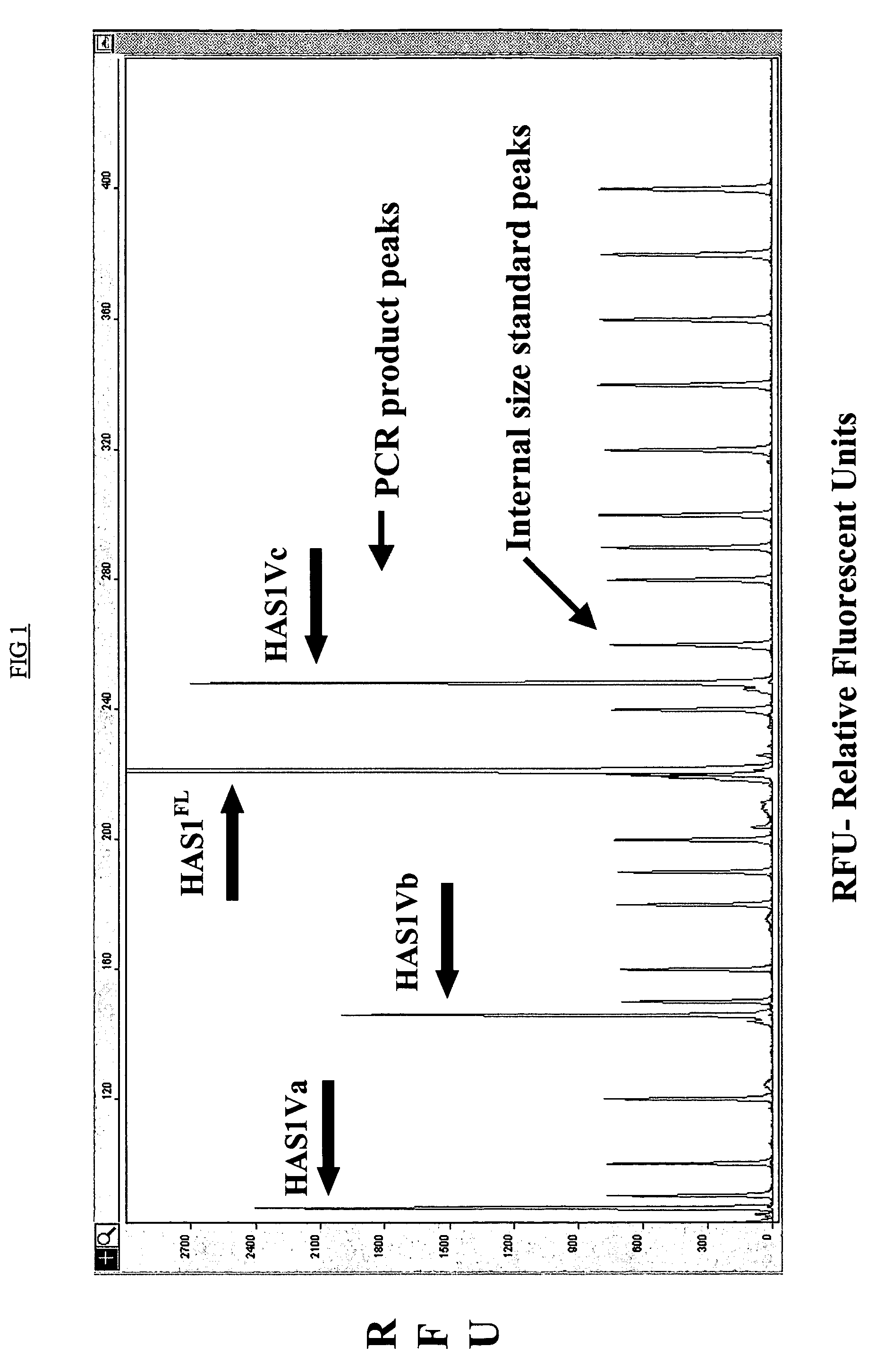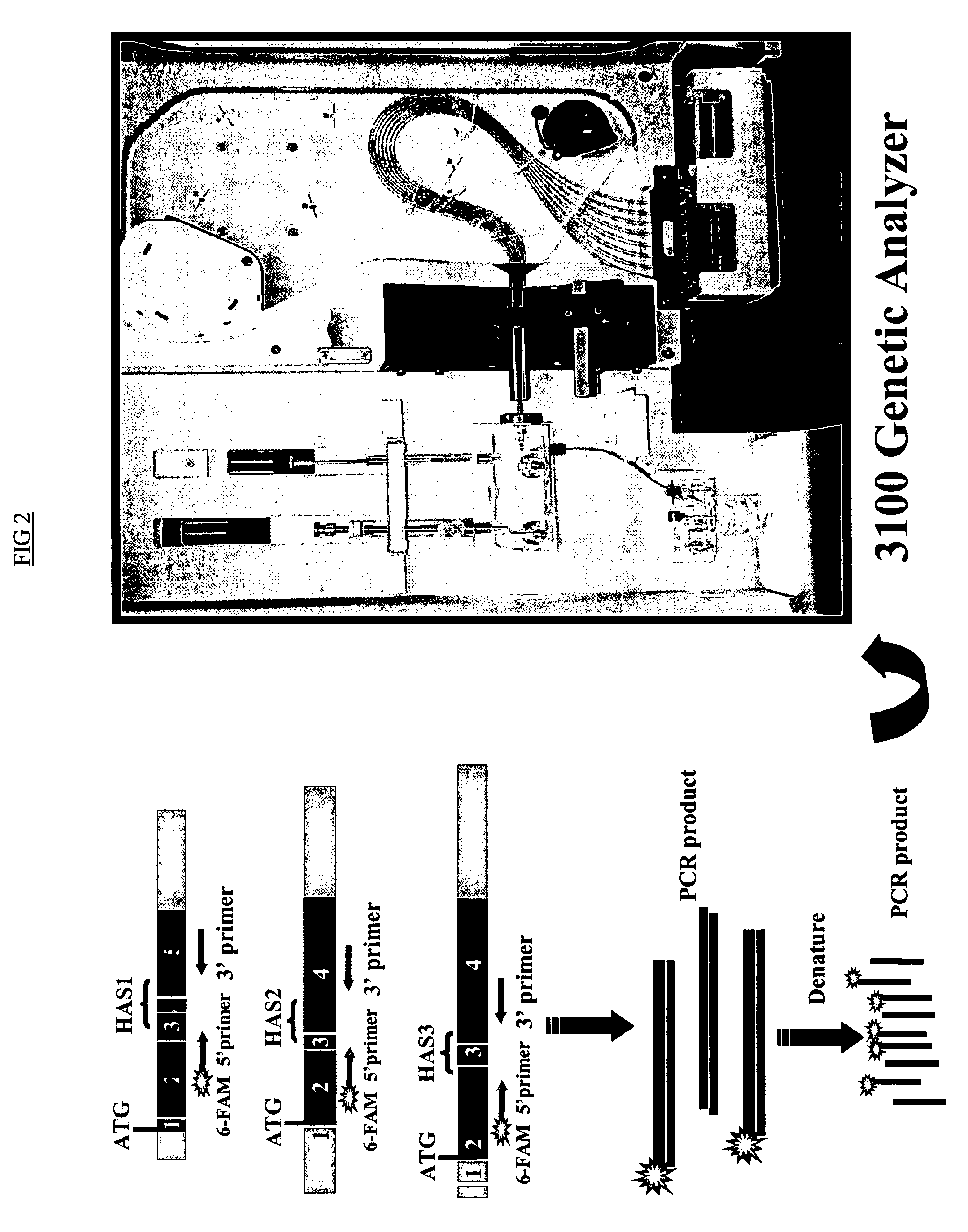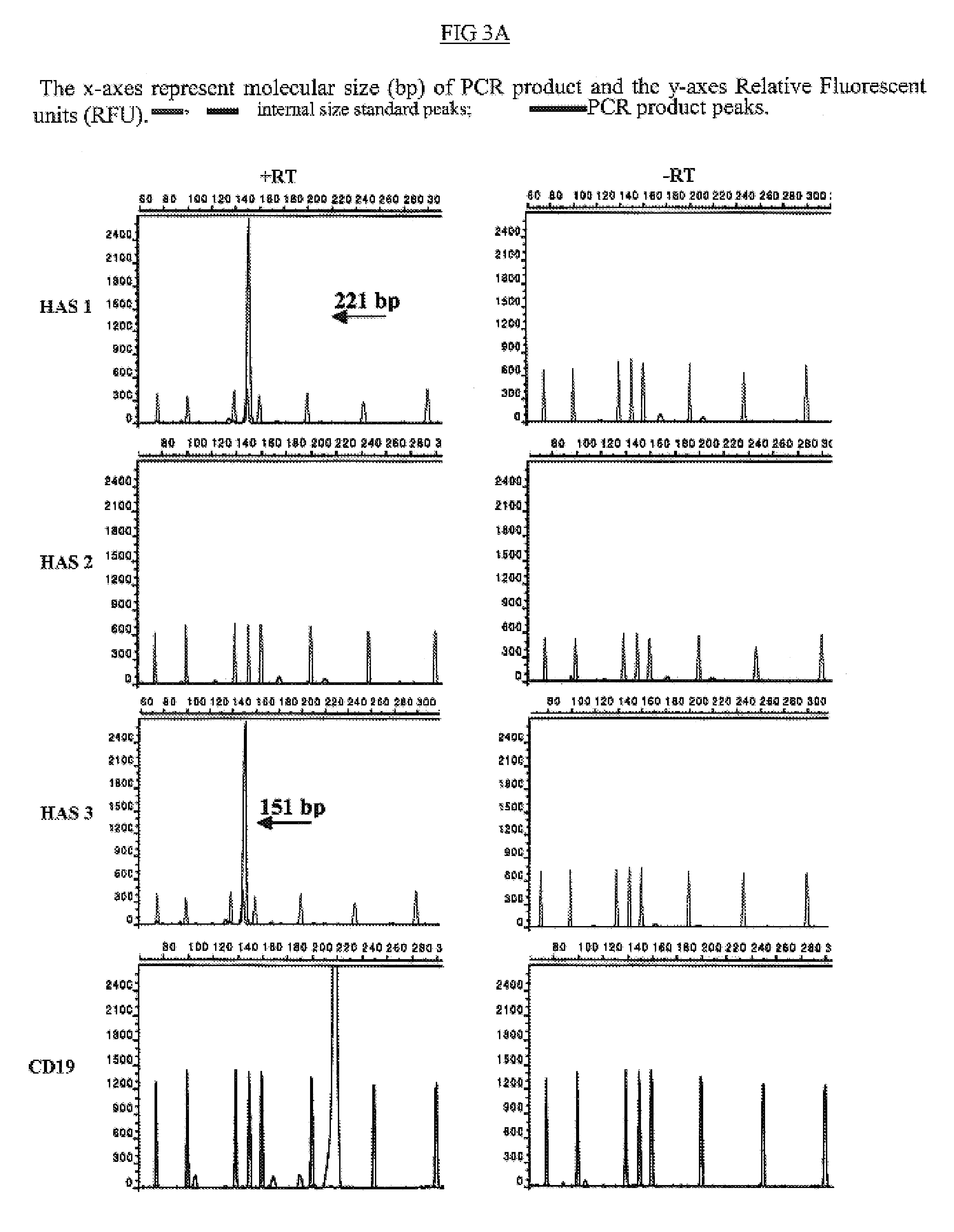Cancer monitoring and therapeutics
a technology of cancer and monitoring equipment, applied in the field of cancer diagnosis, can solve the problems of loss of replication fidelity, loss of translocation or loss of genetic material, and little known abou
- Summary
- Abstract
- Description
- Claims
- Application Information
AI Technical Summary
Benefits of technology
Problems solved by technology
Method used
Image
Examples
example 1
Novel Splice Variants of Hyaluronan Synthase 1 in Multiple Myeloma (MM)
[0162]To examine the role of hyaluronan synthases (HASs); HAS1, HAS2, and HAS3; in MM, we determined the expression pattern of HASs in MM B and PC.
[0163]The expression profiles of the HAS genes were analyzed using RT-PCR and detected by a DNA fragment analysis approach in which gene transcription is assessed by detecting changes in the amplified fragments generated from HAS specific primers in a RT-PCR reaction. FIG. 1 depicts expression of HAS1 and its novel isoenzyme variants detected using RT-PCR and DNA fragment analysis approach (FIG. 1). In PCR reactions 5′ primers were fluorescently labeled. Total RNA from B and PC were immediately isolated after cell sorting procedure. The X-axes represent molecular size (bp) of PCR product and the Y-axes Relative Fluorescent Units (RFU), with internal size standards and HAS specific peaks present along with PCR product. The PCR reaction was performed using 5′ fluorescent...
example 2
Further Examination of HAS Gene Expression in MM Patients.
[0174]In order to elucidate the differential effects of HAS isoenzymes on MM oncogenesis, the expression pattern of HASs were examined in MM, monoclonal gammmopathy of undetermined significance (MGUS), and chronic lymphocytic leukemia (CLL) CD9+B cells, MM bone marrow plasma cells (PC, defined as CD38hiCD45lo cells), and B cells obtained from healthy donors (Table 2a,b). Through RT-PCR and a highly sensitive DNA fragment analysis using the ABI 3100 genetic analyzer and GeneScan software, we have detected a cell-type specific expression pattern of HAS genes in CD19+B cells obtained from patients with MM (13 patients), MGUS (4 patients) and healthy donors (10 donors), and MM (11 patients) CD38hiCD45lo PC (Table 2a,b). This analysis shows that HAS3 gene is ubiquitously expressed in all tested MM and MGUS patients and in all analyzed healthy donors (not shown).
[0175]
TABLE 2aExpression of HASs in PB CD19+ B cellsand BM PC obtained...
example 3
Novel Splice Variants of HAS1
[0180]In addition to cell type specific expression of HAS1 and HAS2 by MM CD19+ B and CD38hiCDlo PC respectively, DNA fragment analysis revealed three novel splice variants of HAS1-HAS1Va, HAS1Vb and HAS1Vcin MM CD19+B cells (Table 2a). We analyzed expression of novel variants in CD38hiCD45lo PC obtained from 11 patients with MM and CD19+ B cells isolated from the PB of MM patients. This analysis revealed 9% of patients expressing HAS1 novel variants HAS1Va and HAS1Vb in CD38hiCD45lo PC while 62% and 54% of MM patients expressed HAS1Va and HAS1Vb respectively in CD19+ B cells. HAS1Vc transcripts were expressed by 46% MM patients in their CD19+ B cells. Similarly to other genes of HASs no novel splice variants of HAS1; HAS1Va, HAS1Vb and HAS1Vc; were detected in the CD19 negative fraction of PBMC (“non-B-cell” fraction of PBMC) (9 MM patients) and CD38 / CD45 negative fraction of BM cells (“non-plasma cell” fraction of BM) obtained from 3 MM patients.
[0181]...
PUM
| Property | Measurement | Unit |
|---|---|---|
| total volume | aaaaa | aaaaa |
| total volume | aaaaa | aaaaa |
| temperature | aaaaa | aaaaa |
Abstract
Description
Claims
Application Information
 Login to View More
Login to View More - R&D
- Intellectual Property
- Life Sciences
- Materials
- Tech Scout
- Unparalleled Data Quality
- Higher Quality Content
- 60% Fewer Hallucinations
Browse by: Latest US Patents, China's latest patents, Technical Efficacy Thesaurus, Application Domain, Technology Topic, Popular Technical Reports.
© 2025 PatSnap. All rights reserved.Legal|Privacy policy|Modern Slavery Act Transparency Statement|Sitemap|About US| Contact US: help@patsnap.com



